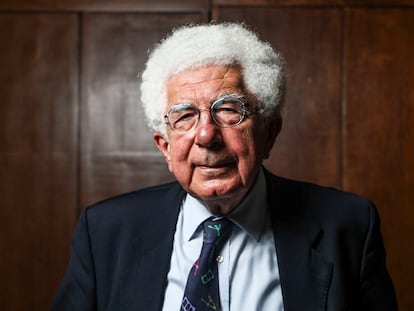A forgotten massacre in a village in Lebanon
Hezbollah leader Hassan Nasrallah’s death and the invasion of the south of the country overshadowed an airstrike in an area considered safe. The missile destroyed a residential building, killing 71 people. Relatives are seeking answers that Israel is not providing
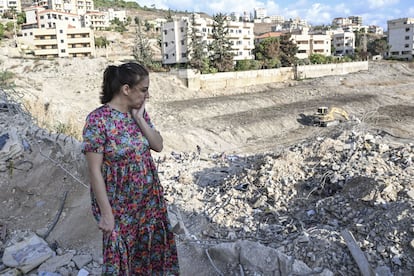
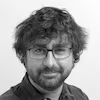
On September 29, Hezbollah confirmed the death of its leader, Hassan Nasrallah, in an Israeli airstrike. Over the following two days, and with half of Lebanon in shock, the Israeli army attacked the center of Beirut for the first time in two decades, bombed Yemen, and invaded southern Lebanon. The exceptional nature of the events dominated the news, relegating another attack on the same day in Ain El Delb, an unknown village near the city of Sidon, to the bottom of the bulletins. Seventy-one people were killed in the bombing, buried under bricks instead of tombstones.
The six-storey building, consisting of more than 70 apartments housing around 100 people — including residents and displaced people from the areas most affected by the Israeli strikes — collapsed about two minutes after the missile hit, according to witnesses, survivors, and medical personnel, as can be seen in a video recorded with a cell phone. It is another forgotten massacre, like those in Gaza that Lebanon is now beginning to experience, after more than 1,300 deaths in recent weeks. The Israeli army — which can take seconds to announce “selective assassinations” of leaders of Hamas, Hezbollah, or Islamic Jihad — did not comment on the attack at the time, nor has it revealed what the objective was.
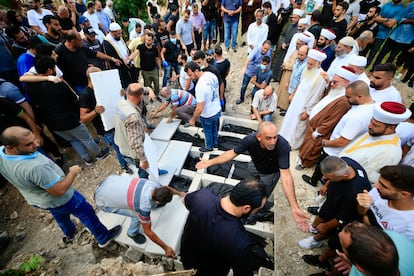
Ashraf Ramadan survived and is returning for the first time to the rubble under which he spent three hours until rescuers pulled him out. He is not at all comfortable, but he wants to find memories of his mother and his sister Julia, who were not so lucky. Above all, his sister’s wallet, containing $500 that she had raised to help the displaced people from southern Lebanon and the now ghostly Shia suburb of Beirut, Dahieh, who numbered then in the hundreds of thousands, a figure that today has risen to 1.2 million. “I promised myself I would find it and donate it,” he explains.
Julia seemed to be one of those people who doesn’t just receive praise on the day of her burial. Her last message on Facebook, hours before she died, was: “Hello, good people. There is a family of 18 in Sidon who needs help. They have nothing. Is it possible that we can do something?” She combined volunteering with her psychology studies at the University of Beirut. Two hours before her online class, the first missile hit.
Collapse
The four of them, parents and children, were in the living room. Julia was the first to notice that the building was leaning, so she grabbed her mother and ran down the stairs. Ashraf, bare-chested from the heat, went to the closet to grab a T-shirt. As he reached the threshold of the door, he felt what he describes as someone “grabbing his legs very tightly and pulling him down.” It was the force of gravity.
The next thing he remembers is being in the rubble, one leg twisted in two directions (he’s fine, but still limping), and hearing his father say, “Mom, I don’t know where she is! Julia is next to me!” The voice sounded far away. “They must have had a lot of stuff on top of them, because I could barely hear it. And I couldn’t hear Julia.” Ashraf had his phone in his pants pocket and discovered that it was still working, so he spent three hours “praying a lot” and texting the location to anyone who could help them. His father was pulled out alive five hours later. His sister and mother died of asphyxiation.
On his return to the site, he is as devastated as he is angry. “Is this a danger to Israel’s security?” he says, picking up the clothes his mother wore to film fitness videos in. A teddy bear, a washing machine, a wristwatch, a Quran, a school notebook, an iPad… The rubble is littered with everyday objects.
Ashraf finds the pillow that his brother, who lives in Kuwait, used when he returned to visit his family. He also gets angry with his mother, perhaps because it is the only thing he has left: “This is another of her rugs. Why would she have so many? I can’t understand it…” Suddenly, on the other side of the mountain of iron and cement, a neighbor who has lost a son calls out with tears in her eyes: “Come and get your mother’s photos.” She hands Ashraf a red box full of old family photographs.
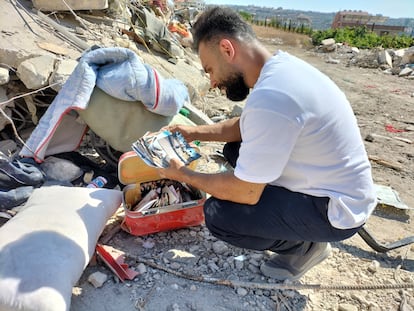
Mother and daughter are buried today in Sidon’s Sunni cemetery, with a brick and a note taped to mark the spot. “It caught us by surprise and there were so many that there was no time for tombstones,” says Ahmed Shehade, 53, who is in charge of the cemetery and preparing the bodies. He proposed burying the 20 or so Sunni dead together “to mark that it was in the same massacre,” rather than scattering them according to family origin, and he took the opportunity to prepare another 20 or so empty graves, he explains. Why? “Well, we are still at war… and you know what Israel is like.”
Nor does 79-year-old Mahmoud Skafi understand why Israel has taken his son, Ali. As the human essence consists in seeking explanations for unexpected tragedies, relatives, friends and neighbors are throwing out hypotheses. They have come to pay their condolences at his home in Yims Naya, a village near where his son lived. There is more pain and incomprehension than hatred for Israel.
Some speculate that “someone from Hezbollah” or a Palestinian militia was hiding in the building, as if finding a motive would give some meaning to the dozens of deaths, including Mahmoud’s son. “If he had suspected that there was someone [potentially being targeted by Israel], he would have left. And if there had been weapons in the basement, they would have exploded,” he says, holding a photo of his son, smiling at the prospect of attending university. Others think that a spy provided bad information and Israel opened fire on the wrong building. A relative listens in astonishment and asks the others: “Are you really surprised that Israel fired directly at civilians? Have you not seen what has been happening in Gaza for a year?”

Ain El Delb had not been bombed in a year of fighting between Israel and Hezbollah. It is in an area with a Sunni and Christian majority, far from the hottest strip bordering Israel, the Beqaa Valley and Dahieh. The Sunni Skafi family also advocates exactly the opposite of Hezbollah: “One army for one country,” in the words of Samah, Ali’s sister, who mourns his death incessantly. That is, that the party-militia should stop controlling its fiefdoms de facto, areas in which the Lebanese Armed Forces have very little say. “I blame everyone for what has happened. Everyone,” Samah adds.
Identity divisions
They all share an impression that is being aired frequently in Lebanon: that Israeli strikes outside Hezbollah strongholds are intended to fuel identity divisions between Sunnis, Shias, Christians, and Druze, in a country that has already experienced 15 years of civil war. This is also the line of the “message to the Lebanese people” issued Tuesday by Israeli Prime Minister Benjamin Netanyahu. It was a call to rise up against Hezbollah — at the risk of generating a second civil war — by the leader of a country that allied itself with the Christian Phalanges when they besieged Beirut and occupied the south of the country from 1982 to 2000.
Last Friday, this newspaper sent the coordinates of the bombed building to the Israeli army spokesperson, along with two questions: what was the target, and was there a prior warning to evacuate? A reply has not been received.
Mustafa Qalqas was one of the first to arrive at the scene, because he is a member of the crisis committee established a year ago by the other major Lebanese Shia faction, Amal. “The image was indescribable, like entering hell. We approached in the middle of the cloud of dust and people were fleeing, running and screaming. We were dragging children out in pieces. You don’t want to see that, I assure you.”
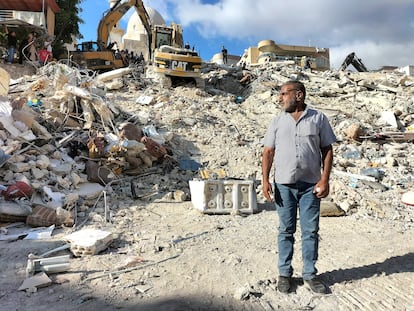
A car arrives with a jerry can. A Caterpillar digger has been searching for survivors non-stop and has run out of fuel. At that time, 52 people had been found dead and 60 had been rescued, some in critical condition. Also, Qalqas estimated, there were dozens of missing. No one knows how many exactly, because displaced people from the south of the country do not always inform the authorities of their new destination and several families took them in.
Barely 24 hours had passed and a young man with a lost look hoped that his parents would emerge from the rubble alive. Kamal Hosho, 61, insisted that there were “two floors left to check,” so it was “not at all certain” that his niece, her husband and their three children were among the dead. He was annoyed, in fact, that people on social media were already praying for them. Fuad Al Baba clung, phone in hand, to the fact that his sister (also in the building at the time of the Israeli attack) continued to receive his WhatsApp messages, even though she did not respond.
Suddenly, screams are heard. Relatives look on expectantly, and paramedics prepare a stretcher and a blanket. They will not be needed. Body number 53 is placed in a white bag, and silence falls. “So far we have mostly taken out regular people from the area. Families. If there were any Hezbollah members, they would be normal ones,” says Qalqas. “It’s not like Nasrallah was here to spark this massacre.”
Sign up for our weekly newsletter to get more English-language news coverage from EL PAÍS USA Edition
Tu suscripción se está usando en otro dispositivo
¿Quieres añadir otro usuario a tu suscripción?
Si continúas leyendo en este dispositivo, no se podrá leer en el otro.
FlechaTu suscripción se está usando en otro dispositivo y solo puedes acceder a EL PAÍS desde un dispositivo a la vez.
Si quieres compartir tu cuenta, cambia tu suscripción a la modalidad Premium, así podrás añadir otro usuario. Cada uno accederá con su propia cuenta de email, lo que os permitirá personalizar vuestra experiencia en EL PAÍS.
¿Tienes una suscripción de empresa? Accede aquí para contratar más cuentas.
En el caso de no saber quién está usando tu cuenta, te recomendamos cambiar tu contraseña aquí.
Si decides continuar compartiendo tu cuenta, este mensaje se mostrará en tu dispositivo y en el de la otra persona que está usando tu cuenta de forma indefinida, afectando a tu experiencia de lectura. Puedes consultar aquí los términos y condiciones de la suscripción digital.
More information
Archived In
Últimas noticias
Most viewed
- Sinaloa Cartel war is taking its toll on Los Chapitos
- Oona Chaplin: ‘I told James Cameron that I was living in a treehouse and starting a permaculture project with a friend’
- Reinhard Genzel, Nobel laureate in physics: ‘One-minute videos will never give you the truth’
- Why the price of coffee has skyrocketed: from Brazilian plantations to specialty coffee houses
- Silver prices are going crazy: This is what’s fueling the rally

